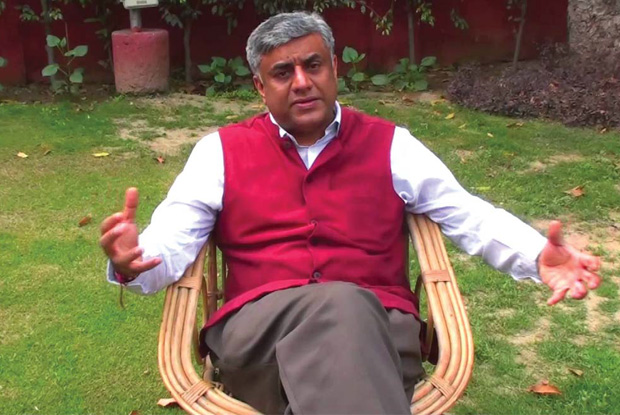We can distil the knowledge of our ancestors, build a bridge between the ancient wisdom and our cutting edge technology – Rajeev Gowda
Leading professionals from the government, academia, civil society organisations, builders, architects and engineers
participated in the sixth GRIHA Summit held today. Green Rating for Integrated Habitat Assessment (GRIHA) is the national rating system for green buildings in India and is the fi rst indigenous attempt to address sustainability issues in the Indian construction sector.
The Summit provides a platform to showcase the rating’s potential to achieve better performing buildings through its variances. More than 700 representatives from the construction industry participated in diverse discussions on breakthroughs in the urban and rural habitats. The Summit is being organized by The Energy and Resources Institute (TERI) and is supported by the Ministry of New and Renewable Energy (MNRE), Government of India, Bureau of Energy Efficiency (BEE), and the US Green Building Council (USGBC).
Delivering the inaugural address, Dr. Rajeev Gowda, Member of Rajya Sabha, commented: “While negotiating with other countries on environment and climate change issues, we emphasize that India is a low-carbon impact society. However, things are changing and adversely.
But we can still pre-empt this kind of future. We can distil the knowledge of our ancestors; build a bridge between the ancient wisdom and our cutting edge technology.”
Mr Amit Kumar, Adjunct Professor, TERI University and Vice President, GRIHA Council voiced his
concerns on the need to introduce certain changes in the construction sector. Sharing the latest achievements of GRIHA he commented that “…we have over 21 million square metres that have been registered for GRIHA certifi cation.” So far 575 projects have been registered, and it is expected that more than 150 projects will be further added this year.
Dr Leena Srivastava, Acting Director-General, TERI who set the theme for the Summit with her welcome note, also stressed on the rapidly changing environment and the need to involve all stakeholders said, “Climate, as we know it, is changing. While we want people to occupy green buildings, and there are more energy service companies are stepping in with services required to facilitate this, it is important that the end-users are empowered to make informed decisions and understand that the economics work in their favour. The need for concerted action on enhancing energy efficiency is much higher today, both for global and domestic reasons.”
GRIHA Council felicitated seven professionals and organisations from diverse fields for having done exemplary work on promotion of sustainable habitats. The professionals are: Ms Poorva Keskar, Director at VK: E-environmental & Principal in- Charge of Masters in Architecture at BRICK School of Architecture, Pune; Ms Swati Puchapalli Reddy, Environmental Building Consultants, Terra Viridis; Mr Anurag Bajpai, Director, Planning & Sustainable Design, GreenTree Building Energy Pvt. Ltd.; Mr P Sahel, Vice Chairman, Lotus Greens; and Ms Anamika Prasad, Director, Environmental Design Solutions.
Mr NP Agarwal, Executive Director, received the award on behalf of National Building Construction Corporation Ltd for mandating at least a 3-star rating for all its building projects and ensuring countrywide implementation of GRIHA by organising intensive training and capacity-building of its professionals all over the country through TERI.
On behalf of Central Public Works Department, Mr Divakar Garg, Director General (Works) received the award for being at the forefront of promoting GRIHA and Green buildings, particularly in the public sector.
Some of the themes that were discussed on the first day of the Summit included:
Building India with GRIHA – Analyzing GRIHA’s role in driving design and construction of sustainable habitats across the country, this session focused on the experiences and approaches of projects and teams across the country.
Designed in India! – ‘Made in India’ corroborates the GRIHA school of thought focussing on indigenous strategies. This session focussed on local design solutions being propagated across the sub-continent by leading architects of India.
The Summit comes in the wake of a revolution in the Indian construction industry. According to the 12th Five Year Plan, almost 600 million people would be living in urban areas, which may result in the emergence of about 60-70 cities with a population of more than a million by 2030. Green buildings are fast becoming a development imperative, as India is set to become the third largest construction market in the world by 2025.










